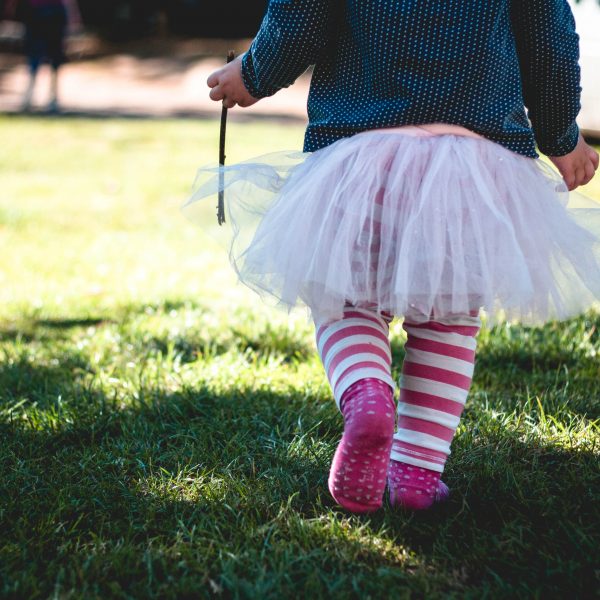Exploring unconscious bias

Did you know that boys named Jacob are nicer than boys named Joseph? Ella and Olivia are more likely to be trouble than Sophie and Grace, and watch out if you have a William in your care, because he’s bound to be trouble.
It may sound like hyperbole, but ‘research’ conducted by a UK company, surveying over 60,000 people has compiled a list Santa would envy – a list of what ‘naughty’ children are more likely to be called, and, in contrast, a list of who is ‘nice’.
While these lists, and others like them, are easily dismissed as the domain of the Mummy Blogger, and “a bit of fun” they indicate a deeper problem – unconscious bias.
What is unconscious bias?
Unconscious biases refer to all the ways in which we are biased to the world around us, and use those biases to influence our decision making and perception of the world. Our brains are hardwired to look for patterns and similarities, and things which confirm our view of the world.
If you are looking to confirm your belief that a co-worker with children gets more flexibility than one without, or that a certain group in society gets special treatment, your brain will unconsciously find ways to confirm your belief and pattern by drawing your attention to examples of “proof”.
A simple example is when you purchase a new car, in a colour you consider to be unique. All of a sudden, you see that colour car “everywhere”.
To use the name example above, while the behaviour of Ella and Grace may be the same, you’re likely to notice one more than the other, if your brain has already placed them in the “naughty” category, based on previous experiences with a child of the same name, or on lists such as the one mentioned above.
Unconscious biases are attitudes and beliefs that are beyond our regular perceptions of ourselves and others, are reinforced by our environment and experiences, and form the basis for many of our patterns of behaviour around diversity.
In their extreme forms, unconscious biases sit at the root of sexism, homophobia, racism, and other forms of discriminatory behaviour.
Unconscious biases and the world of ECEC
Early childhood education and care (ECEC) professionals working under the National Quality Framework (NQF) are working under a framework with equity, inclusion and diversity as underpinning elements. The NQF “recognises all children’s capacity and right to succeed regardless of diverse circumstances, cultural background and abilities.”
Put simply, the framework which all educators are mandated to follow requires all educators to hold high expectations for children’s learning and development – regardless of cultural background, ability or circumstance.
Educators are asked to consider, and reflect upon, their biases, both conscious and unconscious, in pursuit of critically reflective practice and change. Element 4.2.2 of the National Quality Standards (NQS) asks educators to “be aware that their attitudes, values and beliefs impact their work. Educators can benefit from working with each other, the educational leader and their supervisor or co-ordinator to identify where biases may have informed their values, and minimise the impact of bias in their practice and relationships with children, families, colleagues and the local community”.
How does unconscious bias affect children?
Speaking with Atlantic, Evelyn Carter, a social psychologist at the University of California, Los Angeles, described bias as follows: “Bias is woven through culture like a silver cord woven through cloth. In some lights, it’s brightly visible. In others, it’s hard to distinguish. And your position relative to that glinting thread determines whether you see it at all.
For the child in a family with same sex parents, the marriage equality vote would have brought a different home atmosphere, and therefore sense of understanding and experience of “difference” than a child who has a more heteronormative family typing.
For a child of Lebanese descent, the 2005 Cronulla riots may take on a sense of urgency, dismay and hurt not present in a family from a different ethnic background. Consider the following extract from the book Exploring Multiculturalism, Anti Bias and Social Justice in Children’s Services by Miriam Giugni.
For Abdul, the silver thread of bias is very close, and very present. For Brian, lead by the TV and other influences, the silver thread is also very present, but from a different angle.
Even at four years of age, the ways in which conscious and unconscious biases are formed come to the surface. Some children are affected by bias about their name, the colour of their skin, their ethnicity, their size, the colour of their hair. All of the ways in which children relate to one another are linked back to the unconscious and conscious bias of the adults in their lives.
How does unconscious bias impact the ECEC workplace?
Where biases, both conscious and unconscious, exist in ECEC settings, a variety of issues can occur.
Consider how a workplace with a manager who believed that male educators should not change nappies, or assist children with toilet learning, would look, sound and feel different to one where this distinction was not made.
What message is sent to parents, children and families when the people who cook and clean within the centre have a different skin tone to the people who answer the phone and work directly with the children?
How might it feel to be an educator who works in the centre on a casual basis each week to not be included in the end of year celebration for the centre, or to be the only educator on the team who does not fit into the size range of provided uniform?
What might the impact be to ECEC services managing the scenarios above?
Research has shown that when biases are embedded into daily practice, leaders will recruit, promote, allocate work and manage performance with filters on their thinking. Without conscious effort, both to acknowledge and to challenge bias, the behaviours that gift privilege to one group will continue to disadvantage another.
Left unchecked, biases can mean:
- Talented people are not given equal opportunity for professional and personal growth and career progression
- A diverse range of ideas is not put forward, and thinking becomes narrowed
- Organisations are vulnerable to claims of discrimination, and prosecution in relation to same
- Employees don’t full contribute to the best of their capacity
- Creativity and productivity is compromised.
How can bias be addressed?
The approved learning frameworks for both early childhood and outside of school hours care encourage educators to engage in reflective practice, critical reflection, and consider which post-structuralist theories may offer insights into issues of power, equity and social justice in early childhood settings.
Educators need to begin, first, with themselves, recognising bias in their programs and practice, and challenging this bias. The approved learning frameworks offer guidance in the form of reflective questions to support this process:
- What are my understandings of each child?
- Who is advantaged when I work in this way? Who is disadvantaged?
- What am I challenged by? What am I curious about? What am I confronted by?
- What aspects of my work are not helped by the theories and guidance that I usually draw on to make sense of what I do?
To draw out the examples given above, and to come back to our opening statement:
- What do I know about Joseph? He’s always touching everything! He never sits still, and he’s always putting the blocks in the sandpit, and the home corner toys with the construction. If I was being polite, I might say he’s “busy” – Joseph days are hard days here!
- Who is advantaged when I work this way? The other children! The room stays neat and tidy, we know where everything is, and the parents don’t walk in and think “Oh my gosh, what a mess!”
- Who is disadvantaged? Joseph I guess, and all the other children who like to be a bit more creative and free flowing with the materials. Actually, the bridge he made with the blocks in the sandpit was pretty cool! Really intricate and strong too. And the other boys were really involved in what he was doing…
From the brief ‘unpacking’ above, you can see that social justice, acceptance, and the gradual erosion of bias happens with ECEC professionals in the first instance, being open to unpacking and discussing their practice, and being open to new and different ways of viewing the world.
From there, ECEC professionals can work with people – children, families, and others in children’s services. Raising awareness of the injustices in society, talking about what is happening in the world, and what we, as a collective, may be able to do about it. Genuine social justice efforts can initially focus on the unique needs of the children, families and communities in which ECEC professionals operate, so that children have a real sense of contributing to their world.
Popular

Events News
Workforce
Marketplace
Practice
Quality
Provider
Research
An exclusive “Fireside Chat” with ECEC Champion Myra Geddes
2025-07-01 11:25:05
by Fiona Alston

Quality
Practice
Provider
Workforce
Child left in storeroom at Sydney centre sparks concerns over supervision and trauma support
2025-06-30 09:09:58
by Fiona Alston

Workforce
Practice
Provider
Quality
Research
Supporting successful transitions: Big moves, big feelings
2025-06-26 11:00:30
by Fiona Alston













